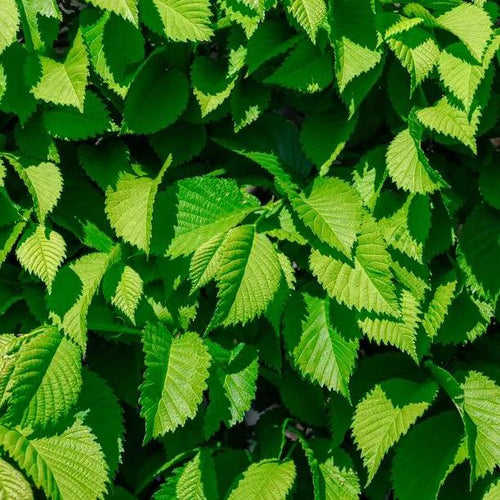Wych Elm Sapling Trees
Wych Elm, Ulmus glabra, is a hardy native Elm that can be used as a hedge plant on fertile, damp soils, although it isn't suitable for waterlogged sites. When it's clipped as a hedge, it'll not attract Elm Bark Beetles.
Wych Elm will reach 30 metres if it grows freely as a tree.
Browse our selection of native hedging or our full range of hedging.
Bareroot plants are only delivered during winter (Nov-March).
All our hedge plants are measured by their height in centimetres above the ground (the roots aren't measured).
Spacing a Wych Elm hedge:
Plant at 3 plants per metre, 33cm apart.
A very hardy, large native tree. Grown as a tree, it tends to have a short trunk that breaks up into large branches a couple of metres above the ground. These will be fairly upright with spreading side branches, so mature trees are often as wide as they're tall. Wych Elm can also be clipped as a hedge, which looks great in summer with its lush, big serrated leaves.
History & Trivia
Ulmus glabra is native from Scotland to Russia and is found in the Alps, especially around Switzerland.The Gaelic name for it's Leam and the Romans called Loch Lomond "Leamanonius Lacus", Lake of the Elms. The word Wych, like wicker, is derived from the Old English wice, to bend. It's not though to be related to the word witch, which derives from wicce - if it were, then the Wiccan religion should surely feature woven baskets much more prominently.
The timber is highly resistant to rotting and was once prized for water pipes and gutters. The leaves are good fodder for animals, and can be added to salads when they first open in spring.
It's susceptible to Dutch Elm disease, but the beetles that spread the fungus are less attracted to it than the English Elm, Ulmus procera, which was almost wiped out after the disease spread here in the 1960's; almost all the remaining English Elms are in Preston Park in Brighton, while mature Wych Elm trees can be found dotted around the UK, often in exposed or coastal locations where the wind is too strong for a flying beetle.
Elms are important for the preservation of the White-letter Hairstreak butterfly.








 Secure, One-Tap Checkout
Secure, One-Tap Checkout
 Hand Picked, Delivered to Your Door!
Hand Picked, Delivered to Your Door! 1 Year Bareroot Guarantee
1 Year Bareroot Guarantee






